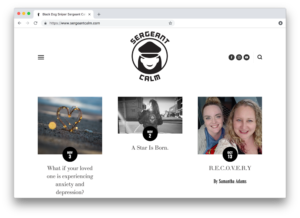Wellness programmes have been part of HR’s mission since the 1970s, especially in the US. These programmes coincided with research that revealed what the cost of poor employee health on a company’s bottom line was, and with the rising culture of fitness in the seventies.
Up until ten or 15 years ago, wellness programmes revolved around health, focusing on things like losing weight, stopping smoking or general fitness and a discounted gym membership for employees.

Wellness is about well-being
But a healthy workplace isn’t just about employees losing weight, or even about keeping colds and flu at bay. ‘Wellness’ is being re-positioned as ‘well-being’. It’s taking a holistic approach and treating the employee as a whole person. It’s about asking, “What about financial stability, emotional and mental well-being?”.
When you think about it, looking at ‘well-being’ in broader terms – which includes physical, financial, environmental, spiritual, emotional, mental and social elements – it really does make sense. For example, at tech giant, Cisco, the concept of wellness has evolved to cover all of the above.
Wellness promotion doesn’t just benefit the employee. When you have an organisation with healthy and fulfilled employees, you have a productive workplace that retains its employees and that becomes an employer of choice.
What really is work-life balance?
Part of an individual’s well-being is having a good work-life balance. We hear this term a lot. But what is it, exactly? Here’s a comprehensive definition:
“Work-life balance is a self-defined, self-determined state of well-being that a person can reach, or can set as a goal, that allows them to effectively manage multiple responsibilities at work, home, leisure and in their community. It supports physical, emotional, family and community health, and does so without grief, stress or negative impact”.
Benefits of work-life balance for organisations
Studies show that investing in work-life balance initiatives for employees brings the following benefits:
- Reduced absenteeism
- Increased productivity
- Improved morale and working relationships
- Decreased stress
- Attracting new employees
- Helping retain current employees
From an HR perspective, this makes sense. With today’s hectic pace of life, employees are drawn to – and tend to stay with – organisations that help them find balance and personal satisfaction.
Wellness as a recruitment strategy
Forward-thinking companies are starting to see wellness as a strategy for recruiting talent , using it to position an organisation as a top employer to attract employees. That’s because workers are looking for companies that support them beyond just a pay check.
Helping employees with financial wellness
A growing number of companies are embracing employee financial wellness. They know that employees who are financially stressed take more days off for health-related issues.
Financial assistance can be direct or indirect, for example directly helping workers pay off student debt. But more commonly, we can help employees help themselves through seminars and webinars on money management, financial literacy and budgeting tips. Some companies even offer sessions on retirement planning, basic and advanced investing, or saving for a home.
Looking at Cisco again, workers are offered a personal money coach for 90 days, and they have access to the company’s financial wellness website.
Mental health of employees
Emotional and mental health is a significant part of the wellness programme picture. Physical wellness is far easier to measure and detect. It’s easy to see if employees are coughing or sneezing. It’s easy to see if somebody is overweight or underweight. But mental illnesses aren’t always quite so easy to spot – yet they can have a serious impact on a person’s ability to work.
Emotional and mental health is gaining a lot of attention – and for good reason. Stress in the workplace is a huge issue, and often leads to mental health issues. It can also lead to poor health behaviours, such as not eating well, sleeping poorly and not moving very much (lack of exercise and becoming sedentary).
What does stress do?
Stress is a major issue affecting workforces across the globe. When you have high amounts of stress in your body, you have high amounts of the hormone cortisol. And when you have a lot of cortisol within your body, the hippocampus (our central organ located within the brain for learning and memory) shuts down and you’re not nearly as creative or innovative, not to mention the ailments that come with increased amounts of cortisol, which include anxiety and depression.
If you can help people reduce cortisol, they immediately become less stressed, less anxious, happier, better problem solvers, better thinkers and are much more innovative.

Mental health in New Zealand
For so long, employers have been unwilling to talk about mental health, often to their detriment. However, New Zealand’s new Health and Safety Act provides for mental health issues. This means employers need to consider the mental health of their workers as part of providing a safe workplace.
The challenge is that non-physical harms are difficult to spot, with employers dependent on staff coming forward to say that they are struggling.
Culture and leadership are key. This requires that employers buy into the idea that this is a real health issue. Businesses need to treat mental health information as confidential and take it seriously, to see stress, fatigue and bullying as hazards and harms that need to be addressed. And employees need to feel comfortable raising mental health concerns with employers.
Ultimately, a mentally healthy workplace should experience greater productivity and greater staff retention, so it’s in everyone’s interests to work at getting it right.
Putting together a wellness programme – where to start?
Putting together a wellness programme requires planning, persistence, and flexibility. Here are three things you should consider:
- Identify health demographics of your workforce. Do you have a range of ages, and a mix of genders and ethnic groups? If you don’t know where your employees are struggling most, then how do you know which schemes are going to make the biggest impact?
- Design a long-term programme.Don’t think about short-term gains. Consider your long-term aims – and design a plan that will help you continue moving in those directions.
- Provide employees with a choice. Many well-being initiatives don’t work because employees don’t know they exist – or because employers aren’t offering the right schemes. By providing a choice, employees will be able to select the plan that they know will help them the most.
So, is all that effort worth it?
Yes, say business leaders and economic experts. But perhaps not in immediate monetary terms, as direct savings for employers are difficult to quantify.
In recent years, though, many companies say that cost savings are not really what’s motivating them to implement holistic health programmes. Research shows 75% of American organisations promote wellness to improve overall employee satisfaction and well-being. That’s a massive turnaround from the 1980s, when saving money was the main driver.
Employers today use wellness programs to recruit and retain employees, as well as to improve their productivity… and their happiness.
Healthy, happy employees are, by far, a much better option than employees who are unwell, health-wise, financially, mentally or otherwise. They’re going to be more productive, more creative and more innovative.
But there’s also an immediate ROI that’s very important to any organisation, and it’s this: If people show up to work and are holistically well and feeling good they’re going to be much better employees on that very day.
[/vc_column_text]
Sergeant Calm – a case study

Sergeant Calm is a non-profit, social enterprise that was started in 2015 by Angela Nicol who has dealt with her own mental health issues and learned how to deal with them in the workplace:
One of the key components to having good mental health in the workplace is communication. From my very first diagnosis, I approached my manager to discuss how it would affect my performance. My manager did research on what I was dealing with, which was a great place to start. We also discussed coping strategies if I found myself unwell either in the office or (and it happens) in the middle of a meeting. I have a code word that I can use to signify I need to leave the room. By using this technique I feel safer in meetings, just knowing I can signal to my team that I’m having a panic attack lessens the chances of it happening.
The severity and unpredictability of my anxiety often means I can struggle with the most basic of tasks. The influx of cortisol means answering phone calls and emails can be extremely difficult for me. This may last a day, or just 2 hours. If it does, I have the support of my team who will help answer the phone and I’m free to turn on my ‘out of office’ to give me some breathing space. I also have been lucky enough to access an amazing career coach through my employment, who has helped me immensely.
Having this support in place has meant that in the past year I have truly flourished in my role. I have become more autonomous and much more involved in the creative process with my clients. My improvement is reflected in regular feedback from clients about how much they enjoy working with me. It also means they get much better results from their campaigns!
This type of support should be a part of the workplace that’s taken very seriously. More resources and teams who can facilitate mental heath awareness training in workplaces are below:
https://www.mentalhealth.org.nz/home/our-work/category/40/open-minds
https://www.mh101.co.nz/workshops
My website also has more information on my journey and free mental health resources: https://www.sergeantcalm.com/


